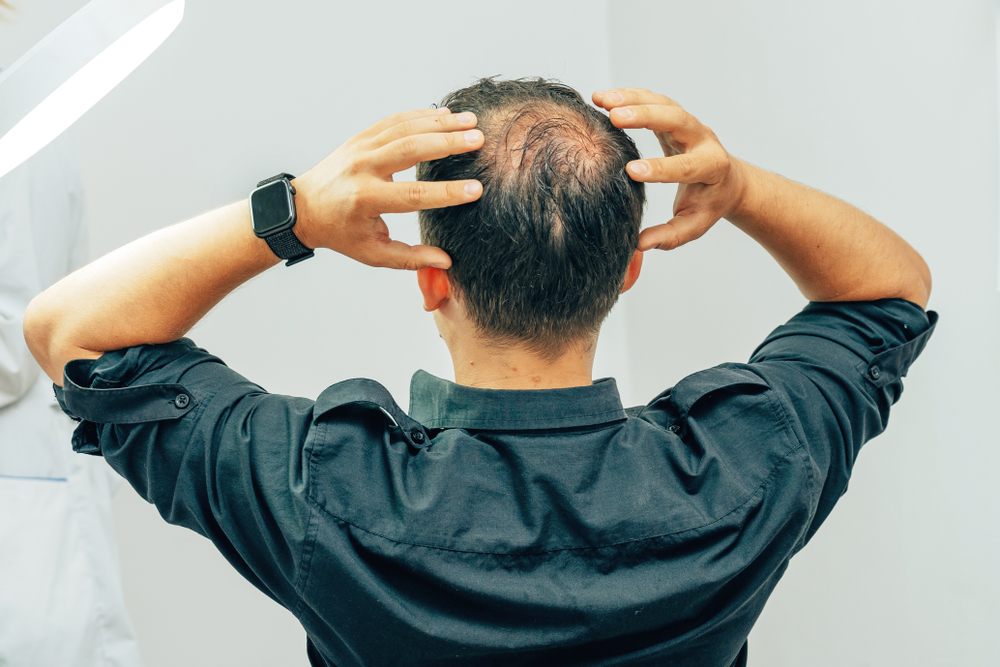
Hair Loss and Testosterone
The link between testosterone and hair loss
Hair loss, often referred to as androgenetic alopecia, is a common concern for both men and women as they age. One of the key hormones associated with hair loss is testosterone, and more specifically, its metabolite dihydrotestosterone (DHT). Understanding the relationship between testosterone, DHT, and hair loss is crucial for those seeking solutions to this common issue. This article explores the intricate connection between testosterone and hair loss and discusses the importance of balancing hormones through bioidentical hormone replacement therapy (BHRT) as a potential treatment option.
The Role of Testosterone in Hair Growth
Testosterone is a hormone predominantly associated with male sexual characteristics, but it is present in both men and women, albeit in different quantities. In men, the testes primarily produce testosterone, while in women, it is produced by the ovaries and adrenal glands. Testosterone plays a vital role in various bodily functions, including muscle development, bone density, and the growth of facial and body hair. However, it also plays a significant role in hair loss, particularly in individuals genetically predisposed to androgenetic alopecia.
Is Balding a Sign of Low or High Testosterone?
The relationship between balding and testosterone levels is not straightforward and can vary from person to person. Contrary to common belief, balding is not necessarily a sign of high testosterone levels. Instead, it often results from the sensitivity of hair follicles to DHT, which is a byproduct of testosterone. People with androgenetic alopecia typically have normal or even lower-than-average levels of testosterone. However, their hair follicles may be genetically predisposed to miniaturize and weaken in response to DHT, leading to hair loss. Therefore, balding is more a sign of the interaction between genetics, DHT sensitivity, and hormone levels rather than an indication of high testosterone.
Dihydrotestosterone (DHT): The Culprit Behind Hair Loss
Dihydrotestosterone (DHT) is a potent derivative of testosterone and is responsible for many of its androgenic effects, including hair loss. The enzyme 5-alpha reductase converts testosterone into DHT, primarily in the hair follicles, prostate gland, and skin. While DHT is essential for the development of male sexual characteristics during puberty, it can also have adverse effects, particularly on the scalp hair.
DHT binds to receptors in the hair follicles, causing them to shrink and weaken over time. This process, known as miniaturization, leads to a shorter hair growth cycle, thinner hair strands, and eventually, hair loss. In individuals with a genetic predisposition to androgenetic alopecia, hair follicles are more sensitive to the effects of DHT, making them more susceptible to miniaturization and hair loss.
Impact of DHT on Women:
While DHT’s role in hair loss is more commonly associated with men, it also plays a significant role in female pattern hair loss, albeit to a lesser extent. Women naturally have lower levels of testosterone than men, but they still produce this hormone, and some of it is converted into DHT. In women with a genetic predisposition to androgenetic alopecia, DHT can contribute to hair thinning and loss. Female pattern hair loss typically presents as diffuse thinning across the crown and frontal scalp areas, and it can be exacerbated by hormonal changes such as menopause or conditions like polycystic ovary syndrome (PCOS). For women experiencing hair loss, understanding the role of DHT and hormonal imbalances is crucial in seeking effective treatment options like BHRT tailored to their specific needs.
Balancing Hormones with Bioidentical Hormone Replacement Therapy (BHRT)
Bioidentical hormone replacement therapy (BHRT) is an approach to hormone therapy that involves using hormones that are chemically identical to those produced by the human body. Unlike synthetic hormones, which may have different molecular structures and side effects, bioidentical hormones are believed to be safer and more effective in hormone replacement treatments.
BHRT can be a viable option for individuals experiencing hair loss due to imbalances in their hormone levels. For those with androgenetic alopecia, particularly men, reducing the conversion of testosterone to DHT can help slow down or even reverse hair loss. BHRT can include the use of bioidentical hormones like testosterone, estrogen, and progesterone to restore hormonal balance and minimize the negative effects of excess DHT on hair follicles.
The Benefits of BHRT for Hair Loss
1. DHT Regulation: BHRT can help regulate the levels of DHT in the body by optimizing the balance between testosterone and DHT. This can slow down the miniaturization of hair follicles and potentially promote hair regrowth.
2. Hair Follicle Health: Bioidentical hormones can support the health and vitality of hair follicles by providing the necessary hormonal signals for robust hair growth.
3. Improved General Well-being: BHRT can offer additional benefits beyond hair loss treatment, such as increased energy, improved mood, and better overall health.
4. Personalized Treatment: BHRT can be tailored to an individual’s specific hormonal needs, ensuring a more personalized and effective approach to combating hair loss.
Conclusion
The link between testosterone, DHT, and hair loss is a complex yet well-established one. Understanding the role of these hormones in hair health is crucial for anyone seeking solutions to androgenetic alopecia. Bioidentical hormone replacement therapy (BHRT) offers a promising avenue for balancing hormones and potentially mitigating the effects of DHT on hair follicles. However, it is essential to consult with a knowledgeable hormone therapy specialist before pursuing BHRT to assess individual needs, risks, and benefits. BHRT, when administered under proper medical supervision, can provide hope for individuals experiencing hair loss and may help them regain confidence in their appearance and overall well-being.

